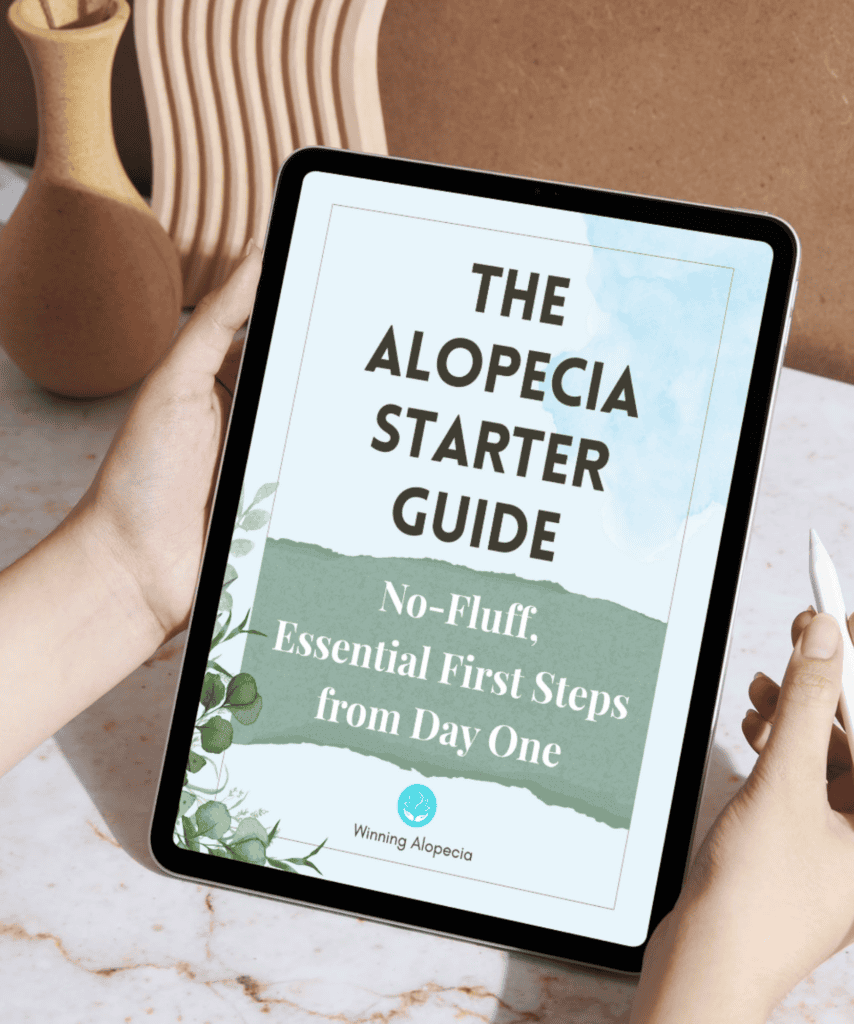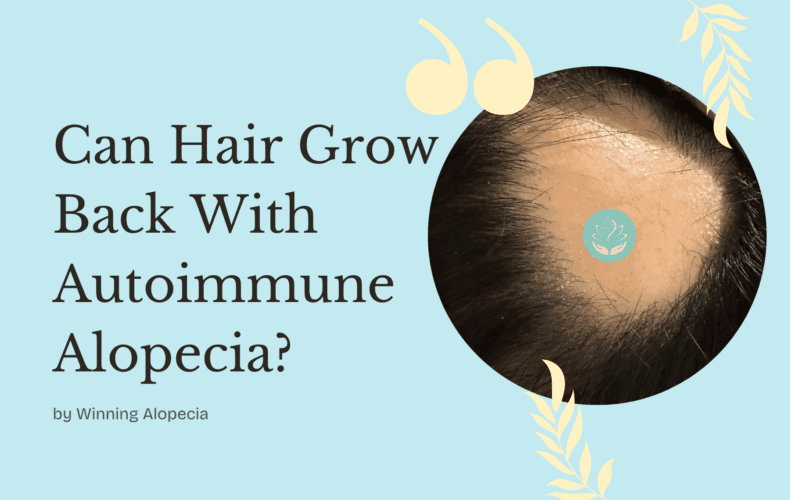Can Hair Grow Back With Autoimmune Alopecia?
My Experience with Childhood Alopecia
Can hair grow back? How long does it take? Can alopecia be reversed in kids? Here are the answers I wish I had nine years ago.
If you’ve ever asked:
- “Will this go away on its own?”
- “Will the hair just grow back and it’s over?”
- “How long will it take for hair to grow back?”
You’re not alone. I asked all of those questions when my child was first diagnosed with autoimmune alopecia. That moment launched a journey that changed everything for our family.
Over the past nine years, I’ve worked with other individuals and families who also felt overwhelmed by the unknowns. What we all needed was clear, direct information about regrowth potential—especially for children. This post shares what I’ve learned.
I’m a parent who has spent nearly a decade researching, implementing, and documenting what works for childhood alopecia. My journey began when I realized that the conventional medical route would offer nothing to address my child’s condition. Here, I’m sharing insights that go beyond standard pharmaceuticals to offer hope through understanding the unique complexities of childhood alopecia—insights I continue to share through Winning Alopecia.
Can Hair Grow Back With Autoimmune Alopecia?
I’ve seen it happen with my own child and in many others, but it depends on several key factors.
What Influences Hair Regrowth in Autoimmune Alopecia?
- Type of alopecia
Some forms have higher recovery potential. Autoimmune types like alopecia areata, totalis, and universalis can all improve when root causes are addressed. - Length of time the hair has been gone
Longer-term cases may take more time, but follicles in autoimmune alopecia often stay alive for years. - Health of the follicles
In autoimmune alopecia, follicles are usually dormant—not dead. That means regrowth is still possible. - Approach taken
A root-cause approach is more likely to support long-term recovery than symptom-focused treatments. - Child-specific factors
Children’s developing immune systems can respond differently—and sometimes more quickly—than adults’.
Which Types of Autoimmune Alopecia Respond Best?
Alopecia Areata (Patchy Hair Loss)
You may hear claims that mild alopecia areata will just spontaneously resolve on its own. Yes, regrowth can happen—but often, patches grow back only because the trigger has been removed (perhaps incidentally) or resolves naturally.
In most cases, patchy hair loss or alopecia areata progresses into larger bald patches or even complete hair loss if triggers and root cause are not addressed.
Alopecia Totalis or Universalis (Complete Hair Loss)
These forms are more advanced but still have recovery potential. The difference isn’t whether regrowth can happen—it’s how much time and consistency is needed.
Related question: Is it harder to regrow hair from alopecia totalis or universalis?
Answer: It takes longer, but the recovery path is still possible with the right approach.
Can Autoimmune Alopecia Be Cured?
There’s no single “cure” in the conventional sense. But when we shift the question to: “Can we reverse the process and regrow healthy hair?”—the answer is often yes.
Think of alopecia as a signal, not a fixed identity. Address the causes, and regrowth becomes a realistic goal—something I emphasize consistently through Winning Alopecia.
What Does Recovery Look Like?
Based on my observations with my own child and others, recovery typically follows this pattern:
- Initial regrowth phase – Thin, fine, soft, unpigmented hair, also called vellus hair, starts to appear in previously bald areas.
- Strengthening phase – Hair gradually regain length, thickness, and pigmentation.
- Stabilization – Immune activity calms and normalizes, hair loss or shedding slows down or stops.
- Maintenance – Hair growth is sustained and progresses through ongoing support.
What Helps Children Regrow Hair From Alopecia?
Understanding What Triggers It in Kids
Children’s bodies respond differently than adults. Their triggers are often:
- Food sensitivities
Children’s immune systems react more strongly to inflammatory foods. - Environmental exposures
Kids absorb more relative to their body size—and detox more slowly. - Internal imbalances
Alopecia in toddlers and babies usually points to immune, gut, or metabolic imbalances—not stress. - Stress (Secondary factor)
Unlike adults, stress is rarely a main trigger in kids, though it may add to the burden.
How to Support Hair Regrowth in Kids Naturally
1. Nutrition That Goes Beyond Nutrients
Nutrients matter—but food quality, digestion, and preparation methods matter more.
- Focus on whole, minimally processed foods
- Support digestion and absorption
- Avoid common food triggers
- Prioritize cooking methods that preserve nutrients and reduce inflammation
Related question: Can supplements alone fix alopecia in kids?
Answer: Supplements help, but without diet and gut support, they often fall short.
2. Support Detox and Immune Regulation
- Help children’s bodies clear toxins gently
- Use foods and protocols appropriate for their developmental stage
3. Work With—Not Against—Their Stage of Development
Children aren’t small adults. What works for a grown-up with alopecia may not be safe or effective for a 6-year-old.
Common Questions About Childhood Alopecia Recovery
How Long Does It Take For A Child’s Hair To Grow Back With Alopecia?
Based on my experience, regrowth timelines vary but generally follow these patterns:
- First signs of regrowth: 3 weeks to 3 months when addressing all potential triggers
- Noticeable improvement: Typically 3-6 months
- Substantial or full regrowth: Usually between 6-12 months
Children sometimes show different recovery patterns than adults, occasionally with more rapid improvement when the right factors are addressed.
FAQ: Common Questions About Childhood Alopecia
How long does it take for a child’s hair to grow back with alopecia?
- Initial regrowth: 3–12 weeks
- Visible improvement: 3–6 months
- Full or substantial regrowth: 6–12 months
This depends on the approach taken. Root-cause approaches tend to lead to more sustained results.
Why don’t conventional treatments work well in kids?
Most medications for alopecia are not intended to be used on children. For example:
- Topical steroids and immunosuppressants do not address triggers and root cause but merely suppress symptoms
- Side effects can interfere with growth, immunity, or long-term health
- Children’s systems are still developing—so risks and responses differ
When my child was prescribed minoxidil and steroids, the specialist, pediatric dermatologist at a leading children’s hospital admitted:
“These aren’t really meant for kids—but it’s all we’ve got. Maybe they will help, but most likely they won’t.” 🤯😱 At least he was being honest and upfront about it.
That’s when I realized I needed to look elsewhere—something that eventually led me to create Winning Alopecia.
Why Is Finding Answers Challenging Even With Alternative Approaches?
Addressing childhood autoimmune alopecia, even with alternative approaches like naturopathic and functional medicine, in my personal experience, are also frustrating because:
- Most practitioners have limited or no experience with alopecia specifically.
- Even fewer, if at all, are experienced in childhood alopecia.
- Expensive testing still doesn’t reveal root causes.
- Alternative approaches still follow a very similar model to mainstream medicine, i.e. test and then prescribe (usually supplements) based on test results. This is still not looking deep enough into causes, as supplementing based on detected anomalies in lab results is also just a form of symptom treatment.
The Reality of Alopecia Recovery in Children
In my nine years on this journey with my own child’s alopecia, I’ve seen firsthand that recovery is possible. Successful approaches typically involve:
- Persistent investigation of personal triggers
Finding the specific combination of factors often requires determined investigation. - Child-centered approach
Recognizing that adult protocols are not suitable for children. - Patience and consistency
Giving the body time to heal while consistently supporting it. - Belief in possibility
Maintaining hope while taking proactive steps forward.
Next Steps For Your Child’s Alopecia Journey
If you’re a parent of a child with alopecia:
- Gather essential information before making major decisions about treatment.
- Learn to recognize potential triggers that conventional approaches overlook.
- Understand the unique considerations for childhood versus adult alopecia.
- Adopt a systematic approach to identifying what works for your child’s specific situation.
- Align with resources that focus on regrowth and recovery, not just acceptance—like what I share at Winning Alopecia, where I document our journey and offer tools for families who want to do more than just wait and see.
Conclusion: A Path Forward
The question isn’t simply whether hair can grow back with alopecia—it’s about understanding what your child’s body needs to restore balance and health.
While there’s no one-size-fits-all solution, many children can achieve substantial hair regrowth when the right combination of factors is addressed.
Your child’s alopecia recovery journey is deeply personal, and there’s tremendous power in taking an active role rather than accepting limited options. The next step isn’t about suppressing symptoms but actively identifying triggers and addressing the underlying factors driving them.
Want to Learn More About Natural Alopecia Recovery for Kids?
My work at Winning Alopecia focuses on empowering parents with clear, practical steps to stop hair loss and support regrowth.
After nine years of direct experience helping my own child recover, I’ve created The Alopecia Starter Guide to provide essential, actionable steps for parents beginning this journey. This resource helps you avoid common pitfalls and make informed decisions from day one—without having to learn everything the hard way as I did.

Disclaimer
The information provided is based on personal experience and is intended for informational purposes only. It is not meant to replace professional medical advice. Always consult with qualified healthcare providers regarding any medical condition, especially before making changes to your child’s treatment plan.
Every child’s experience with alopecia is unique, and results may vary. What worked in my personal journey with my child may not work identically for everyone. This content reflects my perspective after nine years of navigating childhood alopecia and should be considered as one resource among many in your information-gathering process.

